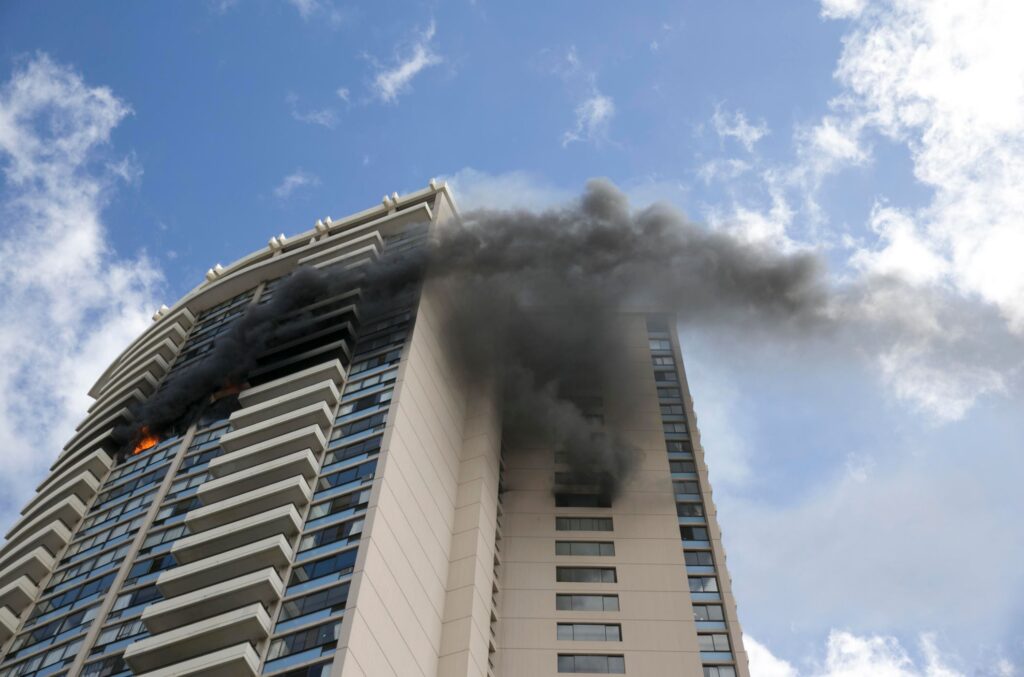What Is It and When Is It Required?
By Jason Reid, Senior Advisor National Life Safety Group
Just over three years ago, a residential high-rise building in downtown Toronto experienced a fire but the fire alarm system didn’t work and there were no announcements made to residents. Thankfully, there were no injuries.
As you can imagine, the fact that the fire alarm system was inoperative and that there were no announcements made was more than troubling to many residents. Thankfully what mitigated the risk to this community was that there was a Fire Watch Program (FWP) in place. It was actually the FWP security guard who called 911 for emergency responders to attend.
At the time, this building was in the middle of a major fire panel replacement project. Fire panels need to be upgraded and replaced over time, generally as part of a manufacturer’s guidelines, to ensure the best protection for building occupants. When a Fire Alarm Panel is being replaced, significant planning is involved to limit risks, but there is a planned period of time that may see the fire system, and/or its components offline. This is where the FWP is implemented.
Whenever a life safety system fails, or in the event of a planned outage for repairs or replacement (such as in this incident) the building owner is required to ensure a number of safety steps are implemented.
Required by law, building owners are responsible to have an approved building Fire Safety Plan.
During planned outages and prior to commencing any project involving the reduction of fire protection services to the building, the building owner is required to follow the building’s approved Fire Safety Plan.
Building owners have numerous responsibilities as specified in the Fire Code, and must ensure that measures in the Fire Safety Plan are implemented. One of the measures that owners are responsible for is the maintenance of an FWP or in other words, pre-planned and approved actions to take in the event that any life safety device or system fails in the building.
An FWP can be defined as a temporary action and/or surveillance measure(s) for the purposes of ensuring the fire-safety of a building in the event of any act or situation that creates an increased risk to persons or property. The term FWP is also used to describe a dedicated person or persons whose sole responsibility is to look for fires and other hazards. An FWP cannot be used as a process to avoid or delay the installation or repair of life safety equipment and systems.
Fire Watch Patrols
All FWPs are designed to have patrols for all areas of impairment, including condominium common areas, access corridors, stairwells, mechanical/machinery rooms, electrical rooms, service rooms, parking garages and offices.
The FWP typically does not have access to residential suites. Residents must also be notified in advance so that they too can be an extension of the FWP within their own suites, and understand any special procedures needed.
Suspension of Hazardous Processes
There are several other areas addressed in a holistic FWP. Your building’s Fire Safety Plan should list these considerations. One important step to take is to implement a restriction of “HOTWORK” in the building during the FWP. This prevents building staff, contractors and service providers from doing any work or repairs that would result in a higher fire risk, such as work involving flame, heat or sparks.
Stopping this work allows building owners to consider risk-reducing steps to act and document their due diligence.
Resident Notifications
During planned outages for repairs and/or upgrades that would cause a life safety system not to function as required, building occupant notifications should be posted at all entrances of the building, and every attempt to inform occupants in advance must be made. The notice must clearly state the problem, expected time of repair and include any special procedures. Your Fire Safety Plan should provide these communication templates for you.
Fire Department Notification
Lastly, it is important to note that any time a life safety system is to be down for a period of more than 24 hours, the local fire department must be notified in writing. Fire departments need to know when they are responding to a building with decreased fire protection so that their tactics and level of response may be appropriate. In addition, at the time of notification, fire departments may direct special provisions to the building owner, and even request that the Fire Safety Plan be revised to consider new plans to be approved prior to any planned work commencing. This is up to the local authority having jurisdiction.
Always refer to your building Fire Safety Plan for your requirements and ensure your plan is up to date for the current calendar year.
